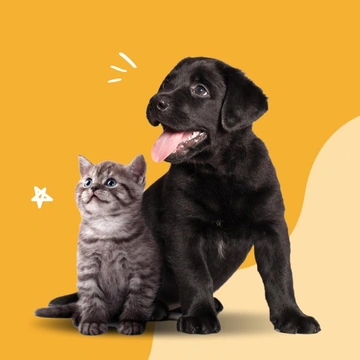
The Post-Pandemic Pet Market: How Coming out of Lock-down Affected Pet Sales And Pricing In 2021
The UK Pet Industry Report vol.2 by Pets4Homes will cover the main trends of the pet market during the peak of the pandemic and its aftermath.
During the past year and a half, we have been faced with unprecedented stress and anxiety fuelled by a global health pandemic. As highlighted in our last industry report, more people than ever before have turned to pets for much-needed companionship during the pandemic, creating an increased demand for pets. Coupled with the initial limited availability of pets this created an unprecedented increase in prices. As we are now slowly but surely coming out of lockdown we are entering a post-pandemic reality that looks quite different from the pandemic and pre-pandemic period.
Link to full report: A reversal of trends - coming out of lockdown. The UK Pet Industry Report vol.2 by Pets4Homes
The Post-Pandemic Pet Market content at a glance
- Demand is normalizing above pre-pandemic levels
- Breakdown of demand by pet type and breed
- Pets types and breeds available for rehoming
- The post-lockdown effect on prices
- Trust & Safety
- Innovations and updates to improve animal welfare
- Activities of Charities
- Conclusion
A reversal of trends to a "new normal"
The transition to “almost” normal is apparent in Pets4Homes data, where demand for pets peaked in January at 7.4 million Brittons looking for a furry companion, of which 78% where looking for dogs and puppies. As we come out of lockdown, this figure has dropped by 40%, but has stabilized at a higher level than pre-pandemic. At the same time we have seen breeders taking the opportunity to breed more litters to meet demand which has lead to an almost doubling in available pets for sale compared to last year. The data does not suggest that people are abandoning their “pandemic puppies” as many have feared. Although we will need to wait to see the full impact of a return to normal life and how it affects pandemic pets, Pets4Homes continues to monitor this space and prioritize the welfare of these pets, long after lockdown ends.
Prices have declined from the peak but are still more than 2x compared to pre-pandemic
The sharp reversal of supply vs demand will inevitably lead to lower price levels than seen during the height of the pandemic and we believe that the drop in price of 16% witnessed for dogs so far is only the beginning of this trend. Lower price levels and less buyers competing for each puppy/kitten will hopefully mean that unscrupulous sellers have less opportunity to take advantage of desperate buyers. Additionally, having the opportunity to view a puppy or kitten in the home environment interacting with its mother, something which was difficult in lockdown, will improve the quality of the rehoming process.
Animal welfare is and should be a key priority for us, the pet industry and the public
We are also glad to have seen such a collaborative spirit between stakeholders in the animal welfare community, from government such as Defra, local councils and police, to animal welfare organisations such as RSPCA, SSPCA, PAAG, charities and rescue centres. We also welcome new regulations to improve animal welfare such as Lucy’s Law being introduced in Wales. As an industry, we have to take action to ensure trust and safety for both pets, buyers and sellers.
With pets still being in such demand, we must ensure that all parties have a convenient, fair and safe experience. Pets4Homes take this joint responsibility incredibly seriously and we have made strides over the last year to uphold our promise of a zero tolerance approach to any animal welfare abuse and to tackle the low welfare trade of pets. However, when it comes to animal welfare even one case of an animal being mistreated is one case too many. As a result, our main focus in the coming six months is to introduce bank-grade ID verification of sellers as well as duplicate image detection through reverse image search, to mention a couple of Trust & Safety improvements.
We must also work with key industry partners such as charities and shelters to ensure that families who are adding furry friends to their households understand that these companions are for life.



